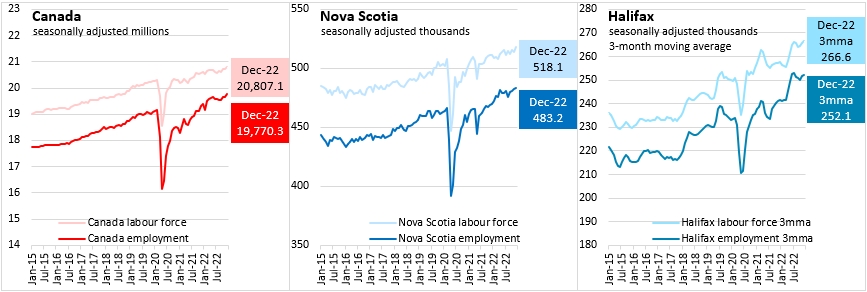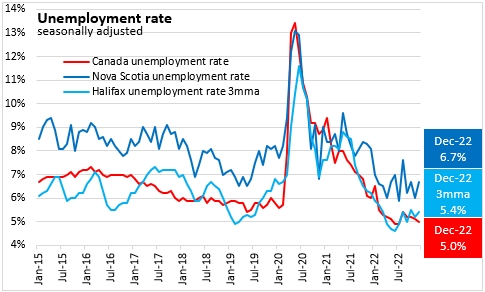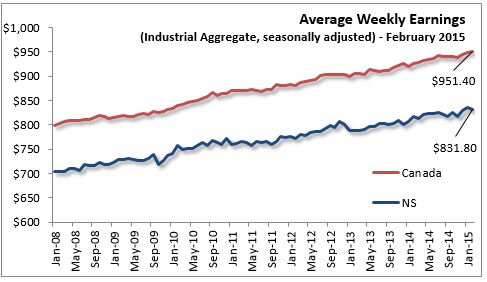To view previous releases, select one from the dropdown box:
Currently displaying information released on: January, 2023
LABOUR FORCE SURVEY - SEASONAL ADJUSTMENT REVISIONS
Statistics Canada has made their annual revisions to past Labour Force Survey's with changes made for transition to National Occupational Classification 2021 with full revisions back to 1987 for occupation data, methodological enhancements to data processing and imputation back to 2006, and seasonal adjustment factors back to 2002. Population data is unrevised. ...
View complete article..
LABOUR FORCE SURVEY, DECEMBER 2022

 &n... &n...
View complete article..
LABOUR MARKET TRENDS, ANNUAL 2022
Ages 15+ (2022 vs 2021, annual averages)
Compared with the annual average from 2021, Nova Scotia's population of working age grew by 19,000 (+2.3%) on average in 2022. The labour force increased at a slower pace (+6,200 or +1.2%) while employment grew faster (+15,600 or +3.4%). With stronger growth in employment than labour force, Nova Scotia's annual average unemployment rate fell to 6.5% - the lowest annual average since the early 1970s.
...
View complete article..
LABOUR MARKET TRENDS, DECEMBER 2022
December labour force survey results reflect the period from December 4-10.
For annual labour market information for 2022, see: Labour Market Trends, Annual 2022
Ages 15+ (December 2022 vs November 2022, seasonally adjusted)
Nova Scotia's seasonally adjusted employment increased 700 (+0.1%) from November 2022, rising...
View complete article..
JOB VACANCIES AND WAGES, Q4 2023
Nova Scotia's job vacancy rate (seasonally adjusted) was 3.6% in Q4 2023, representing 15,940 job vacancies. Nova Scotia's job vacancy rate declined from 4.0% in Q3 2023.
Nationally, the job vacancy rate was 3.8%, down 0.1 percentage points from Q3. The highest job vacancy rate was reported in Saskatchewan while the lowest job vacancy rates were in Newfoundland and Labrador. &nb...
View complete article..
EMPLOYMENT INSURANCE FEBRUARY 2015
In February 2015, the number (seasonally adjusted) of Nova Scotians receiving regular Employment Insurance (EI) benefits increased by 580 persons (2.2%) from the previous month to 27,190 and increased by 160 persons (0.6%) over February 2014.
In February 2015, the number (seasonally adjusted) of Canadians receiving regular EI benefits increased by 9,940 persons (2.0%) from the previous month to 509,780 and declined by 3,470 (-0.7%) over February ...
View complete article..
EMPLOYMENT, EARNINGS AND HOURS, FEBRUARY 2015
Nova Scotians' average weekly earnings (including overtime, seasonally adjusted) decreased $3.98 per week (-0.5%) from January to $831.80 in February 2015. This is 1.9 per cent above the level in February of last year. Canadians' average weekly wages increased 0.3 per cent from January to $951.40 in February 2015, a 2.7 percent increase over February 2014.

View complete article..
|